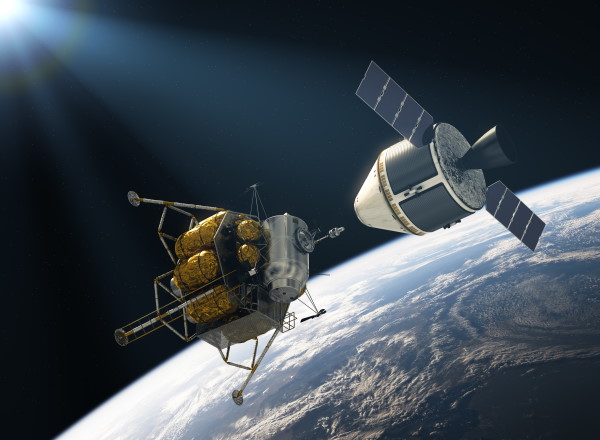New math for going to the moon

Before I went to college, I'd heard that it took new math and science for Apollo to get to the moon. Then in college I picked up the idea that Apollo required a lot of engineering, but not really any new math or science. Now I've come full circle and have some appreciation for the math research that was required for the Apollo landings.
Celestial mechanics had been studied long before the Space Age, but that doesn't mean the subject was complete. According to One Giant Leap,
In the weeks after Sputnik, one Langley [Research Center] scientist went looking for books on orbital mechanics-how to fly in space-and in the Langley technical library he found exactly one: Forest R. Moulton's [1] An Introduction to Celestial Mechanics. In 1958 Langley was in possession of one of the most recent editions of Moulton: the 1914 update of the 1902 edition.
I have a quibble with part of the quote above. The author describes orbital mechanics as how to fly in space." More technically, at the time, orbital mechanics was how things fly through space." Orbital mechanics was passive. You wanted to know how, for example, Titan moves around Saturn. Nobody asked about the most efficient way to change the orbit of Titan so that it ends up at a certain place at a certain time.
NASA needed active orbital mechanics. It had to do more than simply describe existing orbits; it had to design orbits. And it had to control orbits. None of the terms in your equations are known to infinite precision, so it is not enough to understand the exact equations under ideal circumstances. You have to understand how uncertainties in the parts impact the whole, and how to adjust for them.
And all this has to be done in a computer with about 500 kilobits of ROM [2]. Because the computer memory was limited, NASA had to know which terms in the equations could be dropped, what approximations could be made, etc. Understanding how to approximate a system well with limited resources is much harder than working with exact equations [3].
Nobody at NASA would have said We've got the math in the bag. Now we just need the engineers to get busy."
Related posts- The orbit that took men to the moon
- Proving that life exists on Earth
- Small course corrections
- Kalman filters
[1] This is the same Moulton of Adams-Moulton and Adams-Bashforth-Moulton numerical methods for solving differential equations. Presumably Mr. Moulton's interest in numerical solutions to differential equations came out of his interest in celestial mechanics. See where Adams-Moulton fits into the ODE solver landscape in the next post.
[2] Each word in the Apollo Guidance Computer was 15 bits of data plus one check bit. There were 2048 words of RAM, 36,864 words of ROM. This amounts to 552,960 bits of ROM, excluding check bits, as much as 68 kilobytes using 8-bit bytes.
[3] Not that the exact" equations are actually exact. When you write down the equations of motion for three point masses, for example, you've already done a great deal of simplification.